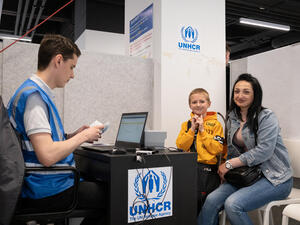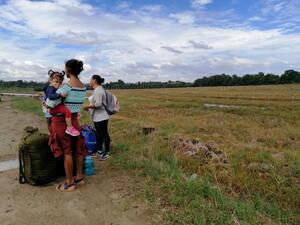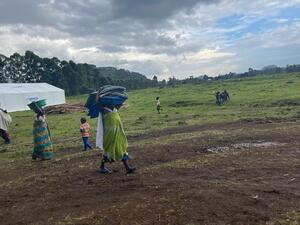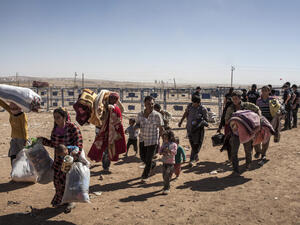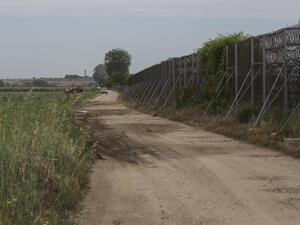Iraqi crisis fuels rise in asylum seekers in industrialized world
Iraqi crisis fuels rise in asylum seekers in industrialized world

Origin of asylum-seekers by UNHCR Bureaux, 2007: Africa, The Middle East and North Africa (MENA), Asia and Pacific, America, Europe, unknown.
GENEVA, March 18 (UNHCR) - A five-year downward trend in asylum applications in industrialized countries was reversed in 2007, largely because of an increase in the number of Iraqi asylum seekers, according to provisional statistics compiled by the UN refugee agency.
Some 338,000 new applications for refugee status were submitted last year in 43 industrialized countries, a 10 percent rise compared to 2006, when 306,300 asylum claims were registered, the lowest number of asylum applications in 20 years, UNHCR said in a press release on Tuesday, adding that the figures were based on information provided by governments.
"The overall downward trend in asylum applications was offset last year by a large increase in the number of asylum seekers from Iraq. For the second year running, Iraqis topped the list of asylum seekers in the world's industrialized countries," the release said. The number of Iraqis applying for asylum almost doubled in one year, from 22,900 in 2006 to 45,200 last year.
UNHCR said it was important to bear in mind, however, that Iraqi asylum seekers in industrialized countries represented only 1 percent of the estimated 4.5 million Iraqis uprooted by the conflict. These include more than 2.5 million people displaced within Iraq and another 2 million Iraqis in neighbouring countries such as Syria and Jordan, which are not included in the industrialized country statistics.
The top five countries of origin of asylum applicants in 2007 were Iraq (45,200), the Russian Federation (18,800), China (17,100), Serbia (15,400) and Pakistan (14,300). Apart from Iraqis, other groups recording a significant rise in applications last year were Pakistanis (up 87 percent), Syrians (up 47 percent) and Somalis (up 43 percent).
Half of all asylum applications were submitted by asylum seekers from Asia (including the Middle East). Africa was the second most important source continent (21 percent of all claims), followed by Europe (15 percent), Latin America and the Caribbean (12 percent) and North America (1 percent).
The United States was the main country of destination for asylum seekers of all nationalities in 2007, with an estimated 49,200 new asylum claims in 2007, accounting for 15 percent of all applications in industrialized countries. Compared to the size of its national population, however, the United States had only one asylum seeker per 1,000 inhabitants, while the average in the European Union countries was 2.6 asylum seekers per 1,000 inhabitants.
Sweden saw a 50 percent increase in the number of new asylum applications, from 24,300 in 2006, to 36,200 last year. This was caused primarily by the arrival of large numbers of Iraqi asylum seekers. In 2007, Sweden received the second largest number of asylum seekers after the United States and accounted for 11 percent of all claims received in the industrialized world, compared with 8 percent in 2006.
After the United States and Sweden, the main countries of destination for asylum seekers in 2007 were France (29,200), Canada (28,300) and the United Kingdom (27,900). Greece, Germany, Italy, Austria and Belgium were also among the top 10 receiving countries.




